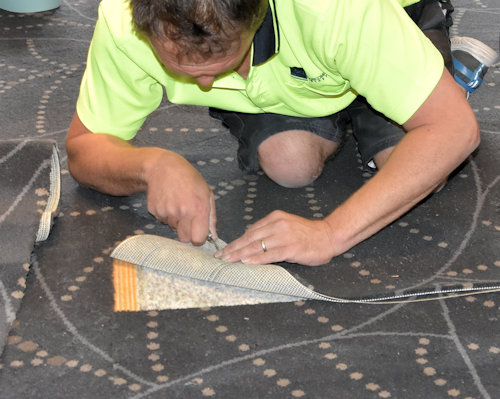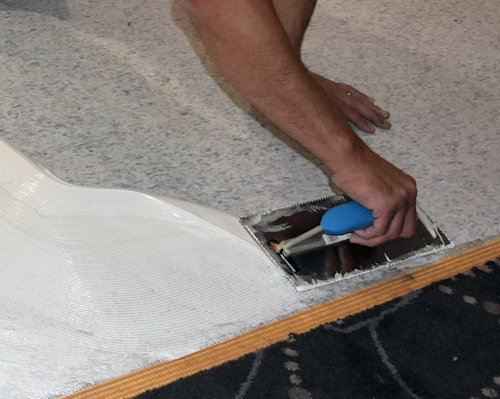Pros and cons of dual bond carpet
 Audio for slide 1 (mp3 |6|KB)
Audio for slide 1 (mp3 |6|KB)
Dual bond carpet is generally used in high traffic areas, particularly in commercial and public buildings such as offices, restaurants and schools.
The floor covering has the advantage of a cushion underlay for extra comfort and durability, without the potential problems of wrinkling or buckling that can occur in conventionally laid 'stretched-in' carpet.

 Audio for slide 2 (mp3 |6|KB)
Audio for slide 2 (mp3 |6|KB)
When stretched-in carpet wrinkles over time due to heavy traffic or abuse, it needs to be re-stretched and re-secured.
Dual-bonded carpet can't move in relation to the underlay or the subfloor, because both layers are bonded.
This makes it suitable for wheeled traffic and other punishing end uses, such as areas where furniture is regularly moved or dragged over the floor covering.


Industry Network Training and Assessment Resourses
© 2023 Workspace Training






